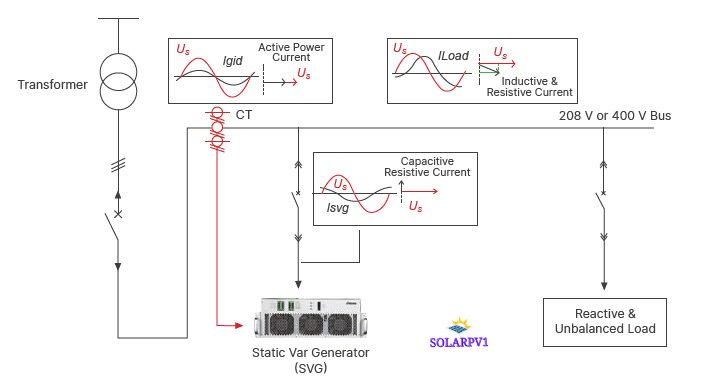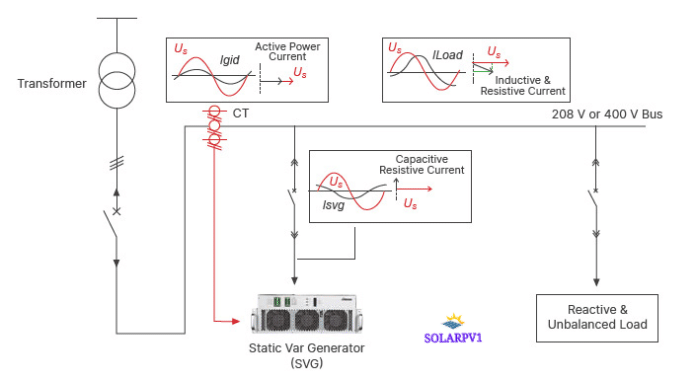Introduction Static Var Generator through power plant Control PPC
Controlling a Static Var Generator (SVG) through a Power Plant Control (PPC) system involves integrating the SVG into the power plant’s automation and control infrastructure. The SVG is used for reactive power compensation, voltage stabilization, and improving power quality. Here’s a step-by-step guide to achieve this:

- Understand the SVG and PPC System
– Static Var Generator (SVG): A device that provides fast and dynamic reactive power compensation to maintain grid stability.
– Power Plant Control (PPC): The central control system that manages and optimizes the operation of the power plant, including generation, distribution, and ancillary systems like SVG.
- Integration Requirements
– Ensure the SVG and PPC systems are compatible in terms of communication protocols (e.g., Modbus, IEC 60870-5-104, DNP3, or IEC 61850).
– Verify the SVG’s control capabilities (e.g., setpoints for reactive power, voltage, or power factor).
- Communication Setup
– Establish a communication link between the SVG and the PPC system.
– Use standard industrial communication protocols:
– Modbus TCP/IP or RTU for basic control.
– IEC 61850 for advanced substation automation.
– OPC UA for interoperability in modern systems.
- Control Strategies
Define how the PPC will control the SVG:
– Reactive Power Control: The PPC sends reactive power setpoints to the SVG based on grid requirements.
– Voltage Control: The PPC adjusts the SVG’s output to maintain a specific voltage level at a point of common coupling (PCC).
– Power Factor Control: The PPC ensures the power factor is within acceptable limits by controlling the SVG.
- Implement Control Logic in PPC
– Develop control algorithms in the PPC system to manage the SVG. For example:
– If grid voltage drops, the PPC sends a command to the SVG to inject reactive power.
– If the power factor is lagging, the PPC instructs the SVG to absorb reactive power.
– Use feedback from the SVG (e.g., current reactive power output, voltage levels) to adjust control parameters in real time.
- Testing and Commissioning
– Perform functional tests to ensure the PPC can successfully send commands to the SVG and receive accurate feedback.
– Test scenarios:
– Step changes in reactive power demand.
– Voltage fluctuations.
– Grid fault conditions.
- Monitoring and Diagnostics
– Integrate the SVG’s status and performance data into the PPC’s Human-Machine Interface (HMI) or SCADA system.
– Monitor key parameters:
– Reactive power output.
– Voltage levels.
– SVG health and alarms.
– Set up alerts for abnormal conditions (e.g., SVG overload or communication failure).
- Optimization
– Use historical data from the PPC to optimize SVG operation.
– Adjust control parameters to improve grid stability and reduce losses.
- Compliance and Safety
– Ensure the integration complies with grid codes and regulations.
– Implement safety protocols to prevent overloading or damaging the SVG.
Example Workflow
- The PPC detects a voltage drop at the PCC.
- The PPC calculates the required reactive power to stabilize the voltage.
- The PPC sends a command to the SVG to inject the calculated reactive power.
- The SVG responds and adjusts its output.
- The PPC monitors the voltage and fine-tunes the SVG’s output as needed.
By integrating the SVG with the PPC system, you can achieve precise and automated control of reactive power, improving grid stability and power quality in the power plant.
